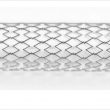Much has been done since studies on conventional balloon angioplasty for BMS instent restenosis showed over 40% new revascularization. Drug eluting stents, aimed at improving this problem, have never achieved 0% restenosis, which is why technologies such as paclitaxel coated balloons have been developed, with reasonable efficacy (8% to 10% reinterventions rate for BMS restenosis and 17% to 23%<a href="https://solaci.org/en/2017/10/20/excellent-outcomes-for-the-first-sirolimus-eluting-balloon-tested-on-instent-restesosis/" title="Read more" >...</a>
Impella Improves Safety in High Risk Unprotected Left Main PCI
Courtesy of Dr. Carlos Fava. The incidence of unprotected left main severe stenosis ranges between 4 and 8%, and it’s mostly associated with multivessel disease. The use of left ventricular support devices in high risk unprotected left main PCI is on the rise, but not much information available in this regard. Read also: “Prior assistance<a href="https://solaci.org/en/2017/10/18/impella-improves-safety-in-high-risk-unprotected-left-main-pci/" title="Read more" >...</a>
With Absorb Out, New Resorbable Scaffolds Have Come onto the Market
By restoring vascular physiology and eliminating the inflammatory focus and the chance of fracture and neo atherosclerosis inherent to DES, bioresorbable scaffolds offer the potential to improve long term outcomes. A number of bioresorbable materials have been tested, mainly polylactic acid, with several limitations that have taken the Absorb bioresorbable scaffold out of the market.<a href="https://solaci.org/en/2017/10/09/with-absorb-out-new-resorbable-scaffolds-have-come-onto-the-market/" title="Read more" >...</a>
Frequency and Evolution of Cardiac Perforation in Patients with a History of MRS
Courtesy of Dr. Carlos Fava. Coronary perforation (CP) is a very uncommon event (≈0.4%), associated with severe complications that entail risk of death. It has usually been related to patients with a history of myocardial revascularization surgery (MRS). However, this group usually presents lower rates of cardiac tamponade due to pericardial fibrosis caused by surgery. This<a href="https://solaci.org/en/2017/10/05/frequency-and-evolution-of-cardiac-perforation-in-patients-with-a-history-of-mrs/" title="Read more" >...</a>
Diabetics’ Silent Ischemia Myth Busted
Diabetes mellitus patients generally present more diffuse coronary disease, faster lesion progression and higher risk of restenosis after PCI. The way these anatomical differences translate into in a different clinical practice, compared to non-diabetic patients, remains unclear. Prior studies comparing the frequency of angina symptoms in diabetic vs. non-diabetic patients have arrived to contradicting outcomes,<a href="https://solaci.org/en/2017/09/29/diabetics-silent-ischemia-myth-busted/" title="Read more" >...</a>
“Ad Hoc” PCI during TAVR: No Impact on Safety or Long Term Outcomes
According to a recent study published in Circulation Cardiovascular Interventions, screening for coronary artery disease (CAD) with an invasive coronary angiography (as part of the protocol prior TAVR) and performing PCI and TAVR in the same session, has no impact on periprocedural safety or on long term outcomes. Study outcomes offer new hope, especially as regards using TAVR<a href="https://solaci.org/en/2017/09/06/ad-hoc-pci-during-tavr-no-impact-on-safety-or-long-term-outcomes/" title="Read more" >...</a>
Self-Expanding Stents Are Superior to Balloon-Expandable Stents in the Iliac Arteries
Courtesy of Dr. Carlos Fava. Severe atherosclerotic disease in iliac arteries is experienced by 15% of all men and 5% of all women. TAC II recommends angioplasty for type-A, -B, and -C lesions. As regards stent type, self-expanding stent (SE, more elasticity) vs. balloon-expandable stent (SB, more radial strength), Reekers indicates superior target lesion revascularization (TLR) with SE. However, there<a href="https://solaci.org/en/2017/09/05/self-expanding-stents-are-superior-to-balloon-expandable-stents-in-the-iliac-arteries/" title="Read more" >...</a>
Striking Finding on Diabetes and Bypass Graft Patency
The higher rate of restenosis in the diabetic population is historic and has been reproduced in all studies and with all kinds of stents, but it was only after the FREEDOM trial when we found out about the higher infarction rate with PCI compared to surgery. This is why 50% of patients undergoing CABG are diabetic. Apart from the above<a href="https://solaci.org/en/2017/09/01/striking-finding-on-diabetes-and-bypass-graft-patency/" title="Read more" >...</a>
2 Year Outcomes of Lutonix Drug Coated Balloon in Superficial Femoral Arteries
There are plenty of clinical studies assessing the use of angioplasty for en la peripheral artery disease with restenosis rates as high as 40% and 60% at 6 and 12 months. Drug coated balloons have significantly raised primary patency, but they have mostly been tested in short lesions with mild calcification and no total occlusions. This<a href="https://solaci.org/en/2017/08/23/2-year-outcomes-of-lutonix-drug-coated-balloon-in-superficial-femoral-arteries/" title="Read more" >...</a>
Bleeding and Mortality in Transcatheter Aortic Valve Replacement
Transcatheter aortic valve replacement (TAVR) is much less invasive than surgical replacement. This is associated with a substantial reduction in bleeding events (up to 60% less). However, clinically relevant bleeding is still present in one every four patients who undergo TAVR, which is associated with morbidity and mortality. Cases of bleeding are not uniform: they may<a href="https://solaci.org/en/2017/08/22/bleeding-and-mortality-in-transcatheter-aortic-valve-replacement/" title="Read more" >...</a>









